
When it comes to Mexican cuisine, there is much more than just tacos and burritos. Mexican cuisine is a reflection of the country’s rich history and diverse regional influences. The cuisine is characterized by bold flavors, vibrant colors, and a mix of traditional and modern cooking techniques.
Mexican cuisine is a fusion of indigenous, European, and African influences. The cuisine has a wide range of flavors, including spicy, sweet, and sour, and is often characterized by the use of fresh ingredients and bold spices.
In Mexico, the palate of the people embraces a rich culinary heritage that is known for its unique flavor combinations, with the most popular herbs and spices being chili, cumin, oregano, garlic, and cilantro.
Mexican cuisine features a wide variety of proteins like beef, chicken, pork, and fish, and an array of vegetables from corn, beans, tomatoes, peppers, and avocados. It also relies heavily on robust sauces, such as mole, that are simmered for hours to develop rich and complex flavors.
From the street food stands to the most elegant restaurants, Mexican cuisine offers a delightful mix of textures and flavors that is hard to resist. The combination of heat, acidity, sweetness, and freshness makes Mexican dishes a perfect choice for any meal at any time of the day.
Regional Mexican Cuisines
Mexican cuisine varies greatly by region. Each region has its own unique dishes and cooking techniques that reflect the history, culture, and geography of the area. In this section, we will explore the three main regional cuisines of Mexico – Northern Mexican Cuisine, Central Mexican Cuisine, and Southern Mexican Cuisine.
Northern Mexican Cuisine
Northern Mexican cuisine is known for its distinct flavors and its focus on meat-based dishes. This region is home to some of Mexico\’s most famous dishes, like carne asada and machaca. The cuisine is heavily influenced by the area\’s ranching and cowboy culture.
Meat-based dishes:
Carne Asada: A grilled beef dish that is served with tortillas and toppings like guacamole, pico de gallo, and beans.
Machaca: A dried beef dish that is often used in breakfast tacos or burritos.
Baked Goods:
Bolillos: A type of bread that is often used to make sandwiches.
Conchas: A sweet bread that is often eaten for breakfast.
Central Mexican Cuisine
Central Mexican Cuisine is the most well-known and widely eaten cuisine in Mexico. It is characterized by its use of corn, beans, and chili peppers. This cuisine is heavily influenced by the Aztec and Mayan cultures.

Corn-Based Dishes:
Tamales: A dish made of masa (corn dough) that is stuffed with meat, cheese, or vegetables, then wrapped in a corn husk and steamed.
Enchiladas: A dish made of tortillas that are filled with meat or cheese, then covered in sauce and baked.
Chili Pepper-Based Dishes:
Chiles Rellenos: A dish made of roasted chili peppers that are stuffed with cheese or meat, then battered and fried.
Mole: A sauce that is made of chili peppers, chocolate, and other spices. It is often served over meat or vegetables.
Southern Mexican Cuisine:
Southern Mexican Cuisine is known for its use of seafood, exotic fruits, and bold flavors. This region is heavily influenced by the Mayan and Aztec cultures, as well as the Spanish colonizers.
Seafood Dishes:
Ceviche: A dish made of raw fish that is marinated in citrus juice and served with vegetables and herbs.
Camarones al Mojo de Ajo: A dish made of shrimp that is sautéed in garlic and served with rice.
Exotic Fruit-Based Dishes:
Papaya Salad: A salad made of papaya, chili pepper, and lime juice.
Mango Salsa: A salsa made of mango, chili pepper, and lime juice.
Traditional Mexican Ingredients
Mexican cuisine is characterized by bold flavors, vibrant colors, and the use of fresh and local ingredients. In this section, we will explore some of the most traditional ingredients that are used in Mexican cuisine.
Corn
Corn is a staple ingredient in Mexican cuisine. It is used to make tortillas, tamales, and other popular dishes. Corn has been a part of Mexican culture for thousands of years and is deeply rooted in the country’s history and traditions.
Beans
Beans are another staple ingredient in Mexican cuisine. They are used in soups, stews, and side dishes. Beans are a good source of protein and fiber, making them a healthy addition to any meal.
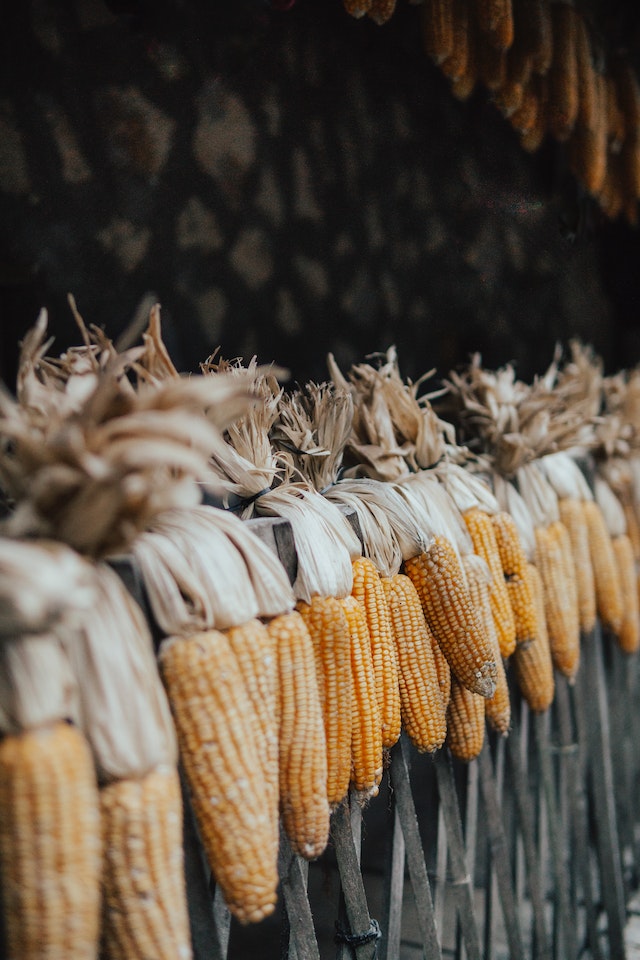
Chilies
Chilies are a defining ingredient in Mexican cuisine. They come in a variety of shapes, sizes, and colors, each with its own unique flavor and level of spiciness. Chilies are used in sauces, stews, and marinades, and are often roasted, charred, or dried before use.
Tomatoes
Tomatoes are another essential ingredient in Mexican cuisine. They are used in salsas, sauces, and stews, and are often served fresh or roasted. Tomatoes are a good source of vitamin C and lycopene, which is a powerful antioxidant.
Avocado
Avocado is a popular ingredient in Mexican cuisine. It is used in guacamole, salads, and as a topping for tacos and other dishes. Avocado is rich in heart-healthy fats and is a good source of fiber.
Cilantro
Cilantro is a herb that is commonly used in Mexican cuisine. It is often used as a garnish or added to sauces and salsas for its fresh and citrusy flavor. Cilantro is also rich in antioxidants and has been shown to have various health benefits.
Limes
Limes are a key ingredient in Mexican cuisine. They are used to add acidity and flavor to various dishes and are often served alongside spicy or rich dishes to cut through the heat and richness. Limes are also rich in vitamin C and antioxidants.
Garlic
Garlic is a common ingredient in Mexican cuisine. It is often used to add flavor to stews, sauces, and marinades. Garlic has been shown to have various health benefits, including reducing blood pressure and cholesterol levels.
Pork
Pork is a popular protein in Mexican cuisine. It is used in dishes like carnitas, chorizo, and tamales. Pork is a good source of protein and is often cooked slowly to develop its rich and tender flavor.
Chocolate
Chocolate has been enjoyed in Mexico for thousands of years. It is used in various dishes, including mole, a complex sauce that is made using chocolate, chilies, and other spices. Chocolate is also a good source of antioxidants and has been shown to have various health benefits.
Staple Mexican Dishes
Mexican cuisine is known for its bold flavors, rich history, and vibrant colors. There are numerous popular dishes that form the backbone of traditional Mexican cuisine. In this section, we will explore some of the most popular and well-known staple dishes that can be found throughout Mexico.
Tacos
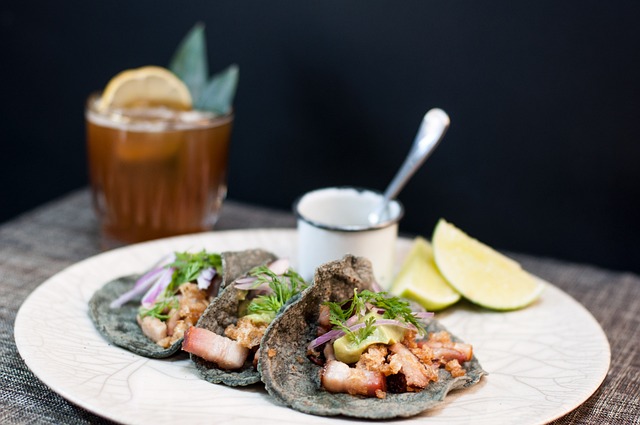
Tacos are one of the most iconic dishes in Mexican cuisine. A taco is a corn or wheat tortilla that is filled with a variety of ingredients, including meat, beans, cheese, and vegetables. Some popular types of tacos include carne asada, al pastor, and fish tacos.
Enchiladas
Enchiladas are another popular Mexican dish. They are made by filling tortillas with meat, cheese, or vegetables, rolling them up, and then smothering them in a chili pepper sauce. Enchiladas are often topped with cheese and baked until the cheese is melted and bubbly.
Tamales
Tamales are a staple dish in Mexican cuisine. They are made by filling masa (corn dough) with meat, cheese, or vegetables, wrapping them in a corn husk, and then steaming them. Tamales can be sweet or savory and are often eaten as a breakfast dish.
Chiles Rellenos
Chiles rellenos are a popular Mexican dish made of poblano peppers that are stuffed with cheese or meat, battered, and then fried. They are often served with a tomato sauce or a creamy Mexican crema.
Guacamole
Guacamole is a Mexican dip made from mashed avocados, garlic, lime juice, and salt. It is often served with tortilla chips or used as a topping for tacos and other dishes.
Refried Beans
Refried beans are a staple side dish in Mexican cuisine. They are made by cooking pinto beans until soft, mashing them, and then frying them in oil with garlic, onions, and other seasonings. Refried beans are often served with rice and meat dishes.
Salsa
Salsa is a popular sauce in Mexican cuisine that is made from fresh tomatoes, onions, chili peppers, and cilantro. There are many different types of salsa, from mild to very spicy, and they are often served with tortilla chips or used as a topping for tacos and other dishes.
Mole
Mole is a complex sauce that is made with chili peppers, chocolate, and other spices. There are many different types of mole, each with its own unique flavor profile. It is often served over meat dishes, such as chicken or beef, and is a staple dish in the southern region of Mexico.
Ceviche
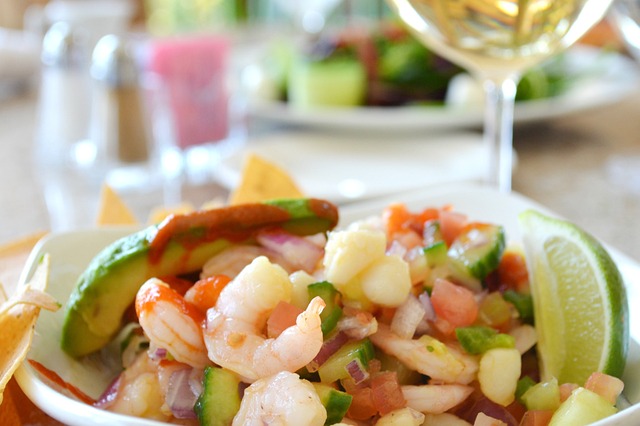
Ceviche is a dish made from raw fish that is marinated in lime juice, onions, and chili peppers. It is often served with tortilla chips or as a topping for tostadas.
Pico de Gallo
Pico de gallo is a fresh salsa made from diced tomatoes, onions, and chili peppers. It is often served with meat dishes or used as a topping for tacos, tostadas, and other dishes.
Mexican Street Food
Mexican street food is a popular aspect of the country’s cuisine. Street food vendors can be found all over Mexico, selling a variety of delicious dishes that are both affordable and full of flavor. In this section, we will explore the world of Mexican street food, including its history, popular dishes, and where to find the best street food in Mexico.
History of Mexican Street Food
Mexican street food has a long and rich history that dates back centuries. The tradition of street food vendors can be traced back to the Aztecs and their markets, where they sold food, ingredients, and other goods. Over time, street food vendors became an integral part of Mexican culture, and their dishes became popular among locals and tourists alike.
Popular Mexican Street Food Dishes
There are many different types of Mexican street food dishes, each with its own unique flavor profile. Here are some of the most popular dishes:
Tostadas
Tostadas are a type of street food that consists of a crisp fried tortilla topped with refried beans, meat, lettuce, tomatoes, and other toppings. They are often served with hot sauce or salsa on the side.
Quesadillas
Quesadillas are another popular street food in Mexico. They consist of a tortilla filled with cheese, meat, or vegetables and then grilled or fried until the cheese is melted and bubbly.
Elotes
Elotes are a popular street food snack that consists of grilled corn on the cob coated in mayonnaise, chili powder, lime juice, and grated cheese. They are often served on a stick for easy eating.
Churros
Churros are a popular dessert street food in Mexico and consist of a crispy fried dough that is dusted with cinnamon and sugar. They are often served with a side of dipping sauce, such as chocolate or caramel.

Where to Find the Best Mexican Street Food
Mexico City is known for its vibrant street food scene and is the perfect place to experience the flavors of Mexican street food. Some popular street food markets in Mexico City include Mercado de la Merced, Mercado de Coyoacán, and Mercado de San Juan. If you’re looking for the authentic taste of Mexican street food, these markets are a great place to start.
Another great place to find Mexican street food is in Tijuana, a city located on the border between Mexico and the United States. Tijuana has a vibrant street food scene, with many vendors selling food on the streets and in markets. Some popular dishes to try in Tijuana include tacos de cabeza (beef head tacos), birria (spicy goat stew), and tortas (sandwiches filled with meat, cheese, and vegetables).
Mexican Desserts and Sweets
Mexican cuisine is known for its bold and spicy flavors, and desserts are no exception. In this section, we will explore the world of Mexican desserts and sweets, including traditional treats and modern twists on old favorites.
Mexican desserts and sweets are typically rich and decadent, often featuring ingredients such as chocolate, cinnamon, and vanilla. Many traditional Mexican desserts are also influenced by Spanish and European cuisines, as well as by indigenous ingredients and techniques.
Mexican desserts and sweets are often served as the final course of a meal, but they can also be enjoyed on their own as a sweet treat.
Tres Leches Cake: Tres leches cake is a sponge cake that is soaked in three different types of milk – evaporated milk, condensed milk, and heavy cream. The cake is then topped with whipped cream and fresh fruit, making it a rich and decadent dessert.
Buñuelos: Buñuelos are deep-fried dough balls that are typically served with a sweet syrup or honey. They are made from a dough of flour, eggs, and cinnamon, which is then shaped into small balls and fried until golden brown.
Mexican Chocolate: Mexican chocolate is a type of chocolate that is flavored with cinnamon and chili powder. It is often used in desserts and sweets, and is a popular ingredient in hot chocolate. Mexican chocolate bars are also a popular treat and are made from a blend of sugar, cinnamon, and ground cocoa beans.
Arroz con Leche: Arroz con leche, or rice pudding, is a sweet and creamy dessert that is popular throughout Latin America. It is made from a mixture of rice, milk, sugar, and cinnamon, and is typically garnished with raisins and nuts for added texture and flavor.
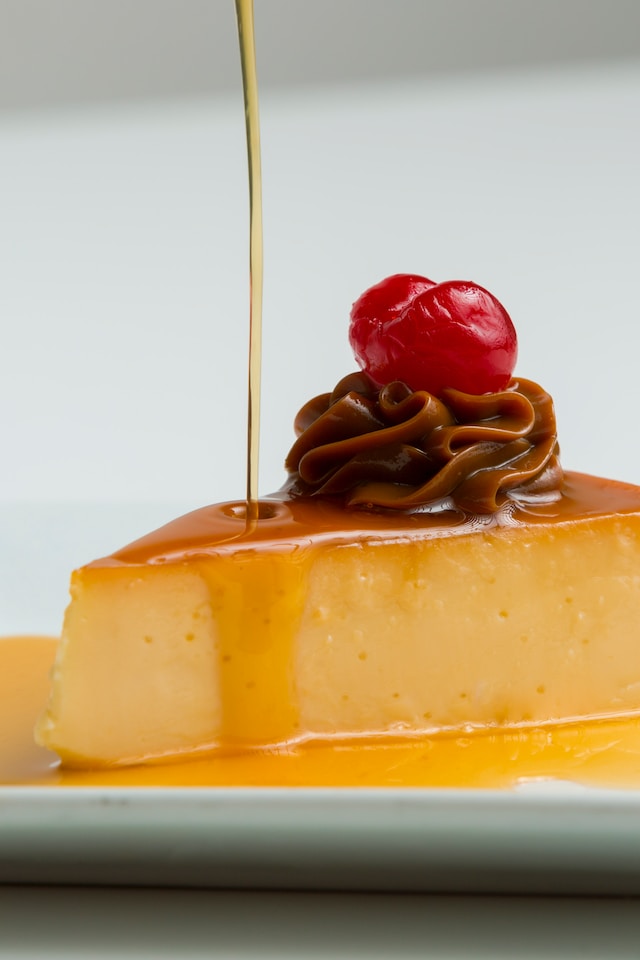
Flan: Flan is a creamy, custard-like dessert that is popular throughout Mexico and Latin America. It is made from a mixture of caramelized sugar, milk, eggs, and vanilla, and is typically baked in a water bath until set. The resulting dessert is rich and smooth, with a sweet and caramelized flavor.
Paletas: Paletas are Mexican-style ice pops that are typically made from fresh fruit purees, milk, and cream. They come in a variety of flavors, including mango, coconut, and strawberry, and are a refreshing treat on a hot day.
Pan de Muerto: Pan de Muerto, or Day of the Dead bread, is a sweet bread that is traditionally baked during the Day of the Dead celebrations in Mexico. It is flavored with anise and orange zest, and is often shaped into a round loaf with decorations that symbolize death and rebirth.
Cocadas: Cocadas are small coconut candies that are made from grated coconut, condensed milk, and sugar. They are often shaped into small balls or patties and are a popular sweet treat in Mexico and other Latin American countries.
Champurrado: Champurrado is a thick and rich hot chocolate that is flavored with cinnamon and corn flour. It is typically served during the winter months and is a popular drink at Christmas and other holiday celebrations.
Mexican Cooking Techniques and Tools
Mexican cuisine is known for its unique and bold flavors, which are achieved through a variety of traditional cooking techniques and tools. From the use of fresh and locally-sourced ingredients, to the preparation and cooking methods, there are many factors that contribute to the distinct taste of Mexican cuisine. In this section, we will take a closer look at some of the techniques and tools that are commonly used in Mexican cooking.
Cooking Techniques
Grilling: In Northern Mexico, grilling is a popular cooking method, particularly for meat dishes. Carne asada, a famous grilled beef dish, is a staple of Northern Mexican cuisine. The meat is often marinated in a mixture of lime juice, garlic, and other seasonings before being grilled over an open flame.
Roasting: Roasting is another popular cooking method in Mexican cuisine, particularly for chilies and vegetables. Roasting enhances the flavor of the ingredients and can add a smokey, charred taste. For example, the poblano peppers used in chiles rellenos are often roasted before they are stuffed with meat or cheese.
Stewing: Stewing is a common cooking method in Mexican cuisine, which is often used for stews, soups, and sauces. One of the most well-known Mexican sauces, mole, is typically simmered for hours to develop its rich and complex flavor.
Frying: Frying is also a popular cooking method in Mexican cuisine, particularly for snacks and street food. Churros and buñuelos, for example, are deep-fried snacks that are popular throughout Mexico.
Tools and Equipment
Molcajete: A molcajete is a traditional Mexican mortar and pestle made of volcanic rock. It is commonly used in Mexican cuisine to grind spices, make salsas, and sauces.
Comal: A comal is a flat, round griddle commonly used in Mexican cuisine to cook tortillas, toast spices, and to heat up certain types of chilies. It is made of iron, stone, or clay and can also be used to blister peppers or dry nuts.
Wooden Spoons: In Mexican cuisine, wooden spoons are often used instead of metal utensils to stir and mix ingredients. This is because wood does not transfer heat as easily as metal, which can help to prevent ingredients from overheating or burning.
Molino: A molino is a traditional Mexican hand-cranked mill, used to grind grains like corn and wheat. It is commonly used to make masa, a type of dough that is used to make tortillas and tamales.
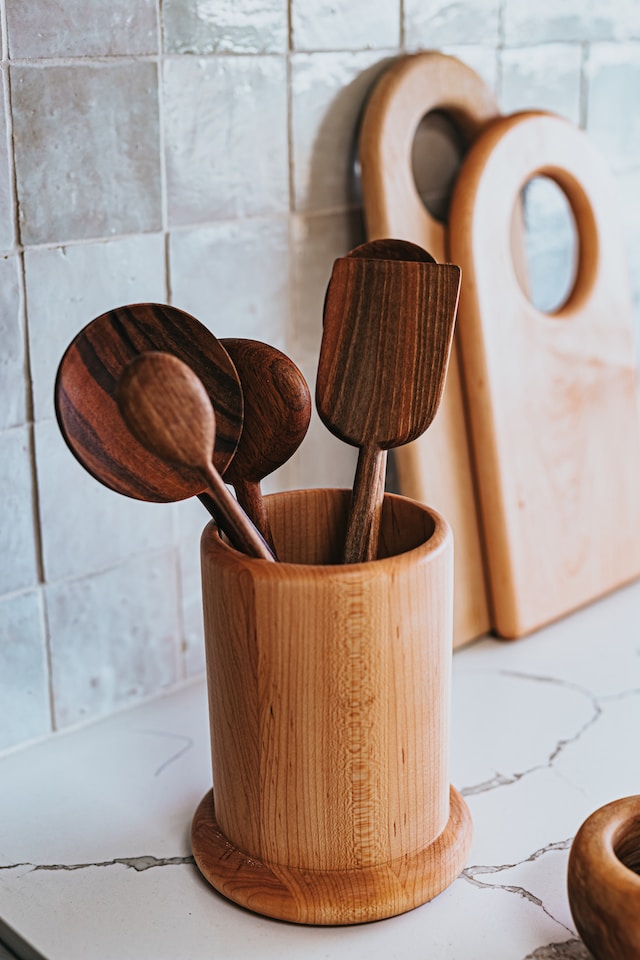
Tortilla Press: A tortilla press is a common tool used in Mexican cuisine to make fresh, homemade tortillas. It is used to flatten balls of masa into thin, round tortillas.
Mexican cuisine is full of bold, spicy flavors, vibrant colors, and a mix of traditional and modern cooking techniques. From the street food stands to the most elegant restaurants, Mexican cuisine offers a delightful mix of textures and flavors that is hard to resist. Its diverse regional influences, use of fresh ingredients, and bold spices make Mexican cuisine a unique and unforgettable experience. Whether you are exploring Northern, Central, or Southern Mexico, or enjoying the delicious street food, Mexican cuisine is sure to tantalize your taste buds and keep you coming back for more.
